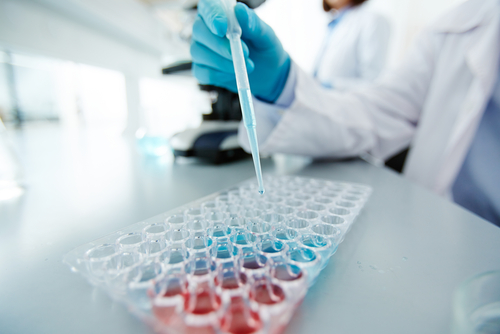Early Genetic Mutations May Contribute to Mitochondria Dysfunction and Parkinson’s Development, Study Suggests
Written by |

Genetic mutations and consequent impaired activity of mitochondria — known as the powerhouses of the cell — may be a first step contributing to the development of Parkinson’s disease later in life, a new study suggests.
The study, “Neural Stem Cells of Parkinson’s Disease Patients Exhibit Aberrant Mitochondrial Morphology and Functionality,” was published in Stem Cell Reports.
Parkinson’s disease is characterized by the degeneration and death of a specific group of nerve cells — called dopaminergic neurons — in the midbrain, which are responsible for producing a neurotransmitter called dopamine. This neurotransmitter acts as a chemical messenger used by nerve cells to communicate.
It remains unclear what exactly triggers these damaging effects, but several studies have provided evidence that both genetic and environmental factors play a critical role.
Mitochondria are small organelles inside cells that provide energy and are known as the cell’s “powerhouses.” Parkinson’s patients are known to have impaired mitochondria activity, which is believed to contribute to the underlying mechanisms of the disease. Still, mitochondria’s role in Parkinson’s disease remains elusive.
An international team of researchers has now found that stem cells carrying a mutated LRRK2 gene — previously linked to familial and sporadic Parkinson’s cases — recapitulate key mitochondrial defects described only in mature dopaminergic neurons.
The team analyzed 13 cultures of human-derived neuroepithelial stem cells (NESCs) — early progenitors of brain cells — that were obtained from three Parkinson’s patients carrying the mutated LRRK2 gene and four age- and gender-matched healthy donors.
They found that patient-derived NESCs had significantly altered patterns of mitochondrial gene expression compared with NESCs from healthy donors. Also, LRRK2 mutated stem cells had more mitochondria but these had aberrant structures and showed reduced capacity to produce energy. Gene expression is the process by which information in a gene is synthesized to create a working product, such as a protein.
Overall, these findings indicate that mutated LRRK2 “interferes with mitochondrial dynamics, suggesting reduced mitochondrial quality,” the researchers wrote.
Further analysis confirmed that Parkinson’s patient-derived NESCs had increased production of toxic oxygen reactive species (ROS) — involved in oxidative stress — and had reduced survival compared with stem cells from healthy donors, which was consistent with impaired mitochondria activity.
Oxidative stress is an imbalance between the production of free radicals and the ability of cells to detoxify them. These free radicals, or ROS, are harmful to the cells and are associated with a number of diseases, including Parkinson’s disease.
In addition, patient-derived NESCs showed impaired ability to clear these damaged mitochondria, meaning that they were unable to restore the normal mitochondria balance and prevent their toxic effects.
“The detection of these (mitochondria features) in a developmentally early neural stem cell model” supports the hypothesis that “preceding mitochondrial developmental defects contribute to the manifestation of the (Parkinson’s disease) pathology later in life,” the researchers concluded.





